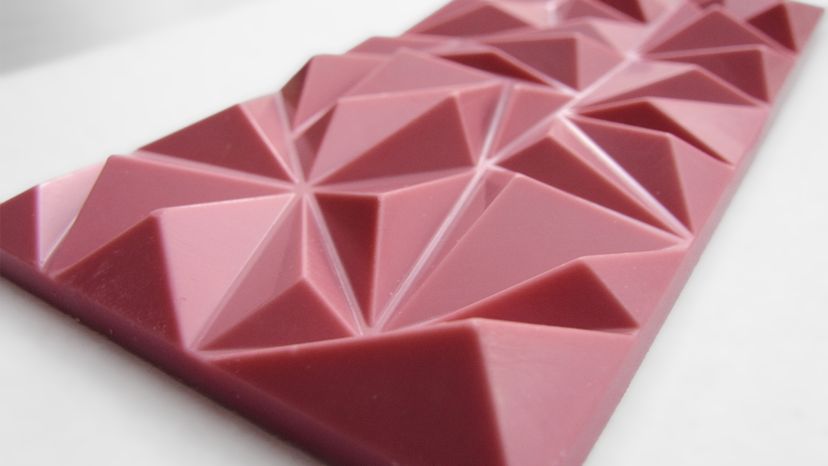“
 “A 100% pure ruby chocolate bar. We know what it tastes like, but finding out how it’s made is another matter. Zacharie Grossen/Flickr (CC By-SA 4.0)
“A 100% pure ruby chocolate bar. We know what it tastes like, but finding out how it’s made is another matter. Zacharie Grossen/Flickr (CC By-SA 4.0)
A pink storm has been quietly shaking up the global chocolate industry over the past few years, and it’s finally made its way to the U.S.
Ruby chocolate — also known as ‘pink chocolate’ for its pale pink hue — first made its debut in 2017. Chocolatier Barry Callebaut, which created and patented ruby chocolate, branded it the newest and "fourth type of chocolate" after dark, milk and white chocolate. Nestlé Japan was the first company to feature the product commercially in 2018, turning out some "berry" good Kit Kats for the Japanese consumer.
Since then, the chocolatier has been building up its ruby chocolate markets overseas in Europe and Asia before bringing it to the U.S. and Canada earlier this year. It is the first new flavor of chocolate introduced in the U.S. since white chocolate made its debut in the 1930s. However, due to Food and Drug Administration (FDA) regulations around what can be called ‘chocolate,’ the product is currently being branded as ‘ruby couverture’ or ‘ruby cacao’ stateside until the company gets the ‘chocolate’ stamp of approval from the FDA.
What’s the Secret?
The exact recipe and processing techniques behind ruby chocolate are closely guarded company secrets, but Barry Callebaut claims that it discovered a new type of ruby cocoa bean that grows only under certain climate conditions in three countries: Ecuador, Brazil and the Ivory Coast. That previously undiscovered bean led to the ruby chocolate we see today. However, industry insiders have offered up another theory. They claim that the ruby chocolate is actually made from normal cocoa that is simply unfermented, lending the beans a pink complexion.
Whether or not you buy the story of its hidden origins, the photogenically pink product is starting to make waves on social media. It’s already racked up more than 37,000 Instagram posts under the hashtag #rubychocolate. The chocolatier describes the unusual taste of ruby chocolate as "a tension between berry-fruitiness and luscious smoothness," while consumers online have described the chocolate "tart" with "berry notes." The company states that no berries, berry flavors or food coloring are added during production of the chocolate.
Although the chocolate has been released in the U.S., it’s not rolling off all the major supermarket shelves yet; therefore, the best way to get ahold of the chocolate for now is online or in select stores. Ruby chocolate purveyors in the U.S. include Harry & David, Vosges and Chocolove (at $31 for a case of 12 bars, this last option may be the best budget option for those with a ruby hankering). Trader Joe’s was selling Ruby Cacao Wafers in stores for a limited time earlier this year, but you can still find its product on Amazon. And Creamistry — a California-based chain that sells ice cream made from liquid nitrogen — has even announced a new ruby cacao flavor.
Canada also sells ruby Kit Kat bars; non-Canadians can also purchase the pink wafers on Amazon. For those outside of the U.S. and Canada, check out this handy map to find companies that sell the treat around the globe.
Learn more about chocolate in "Bean-to-Bar Chocolate: America’s Craft Chocolate Revolution: The Origins, the Makers, and the Mind-Blowing Flavors" by Megan Giller. HowStuffWorks picks related titles based on books we think you’ll like. Should you choose to buy one, we’ll receive a portion of the sale.
Now That’s Interesting
‘Chocolate’ has its linguistic origins in the word ‘xocoatl,’ which was a chocolate beverage consumed by the Aztec people centuries ago.


